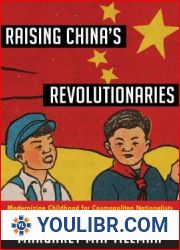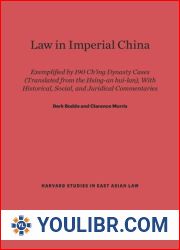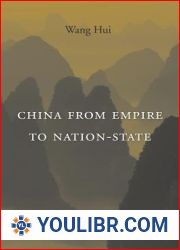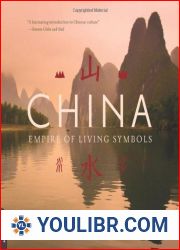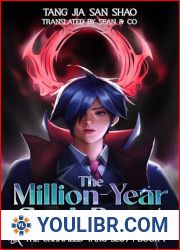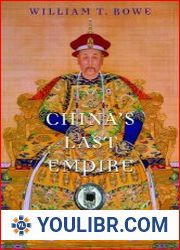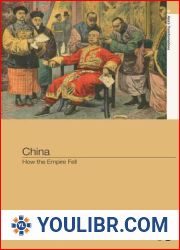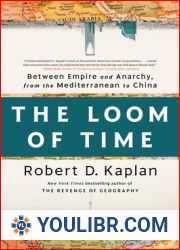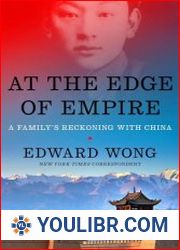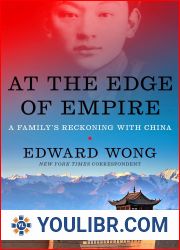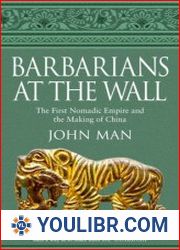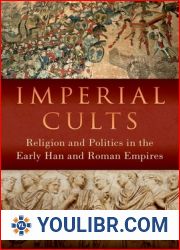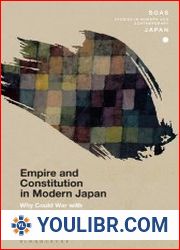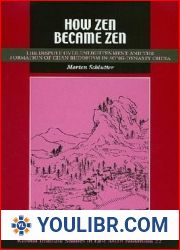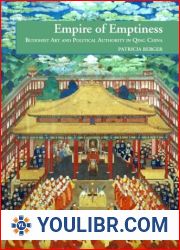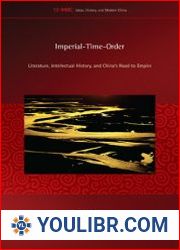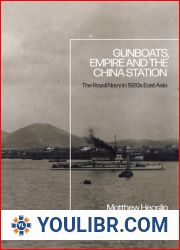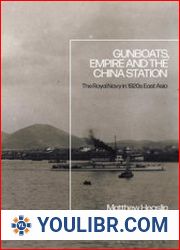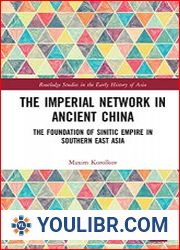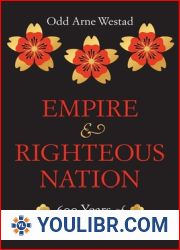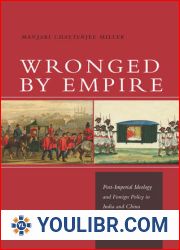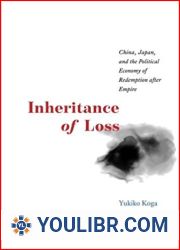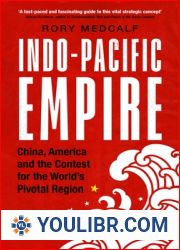
BOOKS - China's Cosmopolitan Empire: The Tang Dynasty

China's Cosmopolitan Empire: The Tang Dynasty
Author: Mark Edward Lewis
Year: June 1, 2009
Format: PDF
File size: PDF 2.2 MB
Language: English

Year: June 1, 2009
Format: PDF
File size: PDF 2.2 MB
Language: English

China's Cosmopolitan Empire: The Tang Dynasty Capital Letter: The Tang dynasty, often referred to as China's "golden age was a period of great cultural, religious, and commercial connections that stretched from Korea and Japan to the Persian Gulf. This dynamic era saw the empire reach its greatest geographical extent under Chinese rule, with painting and ceramic arts flourishing, women playing major roles as rulers and in the economy, and the finest lyric poets in Wang Wei, Li Bo, and Du Fu emerging. Extensive trade by sea and land was conducted, with merchants from Inner Asia settling in the capital while Chinese entrepreneurs ventured into the wider world, marking the beginning of a global diaspora. Poems celebrated the glories of the capital, meditated on individual loneliness within its midst, and described heroic young men and beautiful women filling city streets and bars. Despite the romantic aura surrounding the Tang, it was not a time of unending peace. In 756, General An Lushan led a revolt that shook the country to its core, weakening the government to such a degree that by the early tenth century, regional warlordism gripped many areas, heralding the decline of the Great Tang.
China's Cosmopolitan Empire: The Tang Dynasty Capital tter: Династия Тан, которую часто называют «золотым веком» Китая, была периодом больших культурных, религиозных и коммерческих связей, которые простирались от Кореи и Японии до Персидского залива. В эту динамичную эпоху империя достигла своего наибольшего географического размаха под властью Китая, с расцветом живописи и керамического искусства, женщинами, играющими главные роли в качестве правителей и в экономике, и появлением лучших лирических поэтов в Ван Вэй, Ли Бо и Ду Фу. Велась обширная торговля по морю и суше, причём купцы из Внутренней Азии селились в столице, в то время как китайские предприниматели отваживались на более широкий мир, отмечая начало глобальной диаспоры. Стихи прославляли славу столицы, медитировали на индивидуальное одиночество в ее среде, описывали героических юношей и красивых женщин, заполняющих городские улицы и бары. Несмотря на романтическую ауру, окружающую Тан, это было не время бесконечного мира. В 756 году генерал Ань Лушань возглавил восстание, потрясшее страну до глубины души, ослабив правительство до такой степени, что к началу десятого века региональный военачальничество охватило многие области, предвещая упадок Великой Тан.
Empire cosmopolite de Chine : The Tang Dynasty Capital tter : La dynastie Tang, souvent appelée « l'âge d'or » de la Chine, a été une période de grands liens culturels, religieux et commerciaux qui s'étendaient de la Corée au Japon jusqu'au golfe Persique. À cette époque dynamique, l'empire a atteint sa plus grande portée géographique sous le règne de la Chine, avec l'épanouissement de la peinture et de l'art céramique, les femmes jouant un rôle majeur en tant que gouvernantes et en économie, et l'émergence des meilleurs poètes lyriques à Wang Wei, Li Bo et Du Fu. Il y avait un vaste commerce maritime et terrestre, avec des marchands d'Asie intérieure installés dans la capitale, tandis que les entrepreneurs chinois se tournaient vers le monde entier pour célébrer le début de la diaspora mondiale. s poèmes glorifiaient la gloire de la capitale, méditaient sur la solitude individuelle dans son environnement, décrivaient les jeunes héroïques et les belles femmes qui remplissaient les rues et les bars de la ville. Malgré l'aura romantique qui entoure Tang, ce n'était pas le temps d'un monde infini. En 756, le général An Lushan a mené une rébellion qui a secoué le pays jusqu'au fond, affaiblissant le gouvernement au point que, au début du dixième siècle, le chef de guerre régional avait envahi de nombreux domaines, annonçant le déclin du Grand Tang.
China Cosmopolitan Empire: The Tang Dynasty Capital tter: La dinastía Tang, a menudo llamada la «edad de oro» de China, fue un período de grandes lazos culturales, religiosos y comerciales que se extendieron desde Corea y Japón hasta el golfo Pérsico. En esta época dinámica, el imperio alcanzó su mayor alcance geográfico bajo el gobierno de China, con el florecimiento de la pintura y el arte cerámico, las mujeres que desempeñaban papeles principales como gobernantes y en la economía, y la aparición de los mejores poetas líricos en Wang Wei, Li Bo y Du Fu. Había un vasto comercio por mar y tierra, con comerciantes de Asia Interior asentados en la capital, mientras los empresarios chinos se aventuraban a un mundo más amplio, marcando el comienzo de la diáspora global. poemas glorificaron la gloria de la capital, meditaron la soledad individual en su entorno, describieron a jóvenes heroicos y mujeres hermosas llenando las calles y bares de la ciudad. A pesar del aura romántica que rodea a Tan, no era el momento del mundo infinito. En 756, el general Anh Lushan lideró una revuelta que sacudió al país hasta el fondo, debilitando el gobierno hasta el punto de que, a principios del siglo X, el caudillo regional había barrido muchas zonas, presagiando el declive del Gran Tang.
China's Cosmopolitan Empire: The Tang Dinasty Capital tter: A dinastia Tang, frequentemente chamada de «era de ouro» da China, foi um período de grandes laços culturais, religiosos e comerciais que se estenderam da Coreia e do Japão até o Golfo Pérsico. Nesta era dinâmica, o império atingiu sua maior dimensão geográfica sob o domínio da China, com o auge da pintura e das artes cerâmicas, mulheres que desempenham papéis principais como governantes e na economia, e o surgimento dos melhores poetas líricos em Wang Wei, Li Bo e Du Fu. Houve um grande comércio por mar e terra, com comerciantes do interior da Ásia se instalando na capital, enquanto empresários chineses se atreviam a um mundo mais amplo, marcando o início da diáspora global. Os poemas celebravam a glória da capital, meditavam a solidão individual no seu ambiente, descreviam jovens heróicos e mulheres bonitas que preenchiam ruas e bares da cidade. Apesar da aura romântica que cerca Tang, não era o tempo de um mundo sem fim. Em 756, o General Ang Lushan liderou uma rebelião que abalou o país até ao fundo, enfraquecendo o governo a ponto de, no início do século 10, a chefia militar regional ter atingido muitas áreas, antecipando o declínio da Grande Tânia.
China's Cosmopolitan Empire: The Tang Dynamasty Capital tter: La dinastia Thang, spesso chiamata «età d'oro» della Cina, è stata un periodo di grandi legami culturali, religiosi e commerciali che si sono estesi dalla Corea al Giappone fino al Golfo Persico. In questa epoca dinamica, l'impero raggiunse la sua più grande portata geografica sotto il dominio della Cina, con il fiorire della pittura e delle arti ceramiche, le donne protagoniste dell'economia e l'avvento dei migliori poeti lirici a Wang Wei, Li Bo e Do Fu. C'è stato un ampio commercio via mare e via terra, con i mercanti dell'Asia Interna che si sono accampati nella capitale, mentre gli imprenditori cinesi hanno avuto il coraggio di raggiungere un mondo più ampio, segnando l'inizio della diaspora globale. poesie celebravano la fama della capitale, meditavano la solitudine individuale nel suo ambiente, descrivevano i giovani eroici e le belle donne che riempivano le strade e i bar della città. Nonostante l'aura romantica che circonda Tang, non era il tempo di un mondo infinito. Nel 756, il generale An Luchan guidò la rivolta che sconvolse il paese fino al profondo, indebolendo il governo al punto che all'inizio del decimo secolo il comando regionale aveva colpito molte aree, preannunciando il declino della Grande Tana.
Chinas kosmopolitisches Reich: Die Tang-Dynastie Hauptstadt Brief: Die Tang-Dynastie, die oft als Chinas „goldenes Zeitalter“ bezeichnet wird, war eine Zeit großer kultureller, religiöser und kommerzieller Verbindungen, die sich von Korea und Japan bis zum Persischen Golf erstreckte. In dieser dynamischen Ära erreichte das Reich seine größte geographische Ausdehnung unter der Herrschaft Chinas, mit der Blüte der Malerei und der Keramikkunst, den Frauen, die als Herrscher und in der Wirtschaft die Hauptrollen spielten, und dem Aufkommen der besten lyrischen Dichter in Wang Wei, Li Bo und Du Fu. Es gab einen umfangreichen Handel auf dem See- und Landweg, wobei sich Kaufleute aus Innerasien in der Hauptstadt niederließen, während chinesische Unternehmer sich in die weite Welt wagten und den Beginn einer globalen Diaspora markierten. Gedichte verherrlichten den Ruhm der Hauptstadt, meditierten über die individuelle Einsamkeit in ihrer Mitte, beschrieben heldenhafte junge Männer und schöne Frauen, die die Straßen und Bars der Stadt füllten. Trotz der romantischen Aura, die Tang umgibt, war es nicht die Zeit des endlosen Friedens. Im Jahr 756 führte General An Lushan einen Aufstand an, der das Land bis ins Mark erschütterte und die Regierung so weit schwächte, dass zu Beginn des zehnten Jahrhunderts die regionale Militärherrschaft viele Gebiete umfasste und den Niedergang der Großen Tang ankündigte.
''
Çin'in Kozmopolit İmparatorluğu: Tang Hanedanlığı Başkenti tter: Tang Hanedanlığı, genellikle Çin'in "altın çağı'olarak anılır, Kore ve Japonya'dan Basra Körfezi'ne uzanan büyük kültürel, dini ve ticari bağlar dönemiydi. Bu dinamik dönemde imparatorluk, Çin egemenliği altında, resim ve seramik sanatının gelişmesi, kadınların yönetici olarak ve ekonomide önemli roller oynaması ve Wang Wei, Li Bo ve Du Fu'daki en iyi lirik şairlerin ortaya çıkmasıyla en büyük coğrafi boyutuna ulaştı. Deniz ve kara yoluyla geniş bir ticaret vardı, İç Asya'dan gelen tüccarlar başkente yerleşirken, Çinli girişimciler daha geniş bir dünyaya yöneldiler ve küresel diasporanın başlangıcını belirlediler. Şiirler başkentin ihtişamını yüceltti, ortasında bireysel yalnızlık üzerine meditasyon yaptı, kahraman genç erkekleri ve şehir sokaklarını ve barlarını dolduran güzel kadınları anlattı. Tang'ı çevreleyen romantik auraya rağmen, sonsuz bir barış zamanı değildi. 756'da general An Lushan, ülkeyi çekirdeğine sarsan bir isyana öncülük etti ve hükümeti o kadar zayıflattı ki, onuncu yüzyılın başlarında, bölgesel savaş yönetimi birçok alanı sardı ve Büyük Tang'ın düşüşünü öngördü.
الإمبراطورية العالمية الصينية: حرف رأس مال أسرة تانغ: كانت أسرة تانغ، التي يشار إليها غالبًا باسم «العصر الذهبي» للصين، فترة من العلاقات الثقافية والدينية والتجارية العظيمة التي امتدت من كوريا واليابان إلى الخليج العربي. في هذه الحقبة الديناميكية، وصلت الإمبراطورية إلى أقصى نطاقها الجغرافي تحت الحكم الصيني، مع ازدهار الرسم وفن السيراميك، ولعب النساء أدوارًا رئيسية كحكام وفي الاقتصاد، وظهور أفضل الشعراء الغنائيين في وانغ وي ولي بو و دو فو. كانت هناك تجارة واسعة عن طريق البحر والبر، حيث استقر تجار من آسيا الداخلية في العاصمة، بينما غامر رواد الأعمال الصينيون في العالم الأوسع، مما يمثل بداية الشتات العالمي. مجدت القصائد مجد العاصمة، وتأملت في الوحدة الفردية في وسطها، ووصفت الشباب الأبطال والشابات الجميلات يملأون شوارع المدينة والحانات. على الرغم من الهالة الرومانسية المحيطة بـ Tang، لم يكن وقت سلام لا نهاية له. في عام 756، قاد الجنرال آن لوشان تمردًا هز البلاد حتى صميمها، مما أضعف الحكومة لدرجة أنه بحلول أوائل القرن العاشر، اجتاح أمراء الحرب الإقليميون العديد من المناطق، مما ينذر بانحدار تانغ العظمى.








 49
49  3 TON
3 TON



